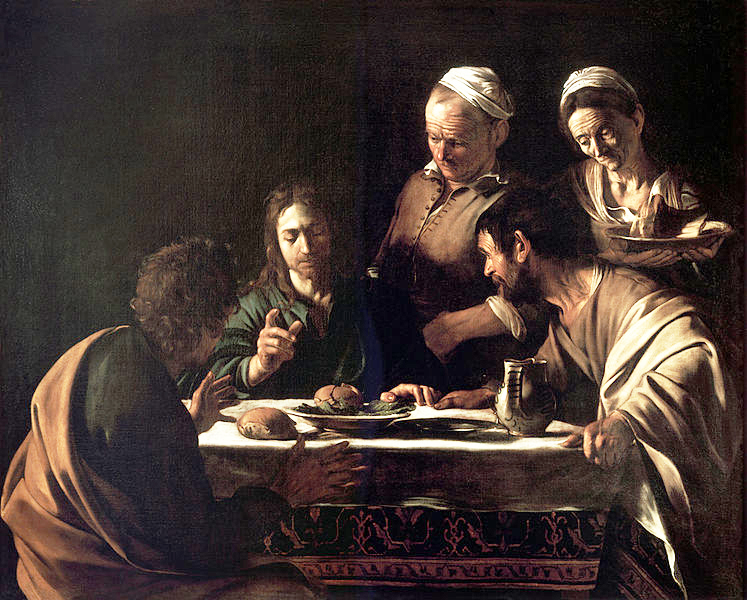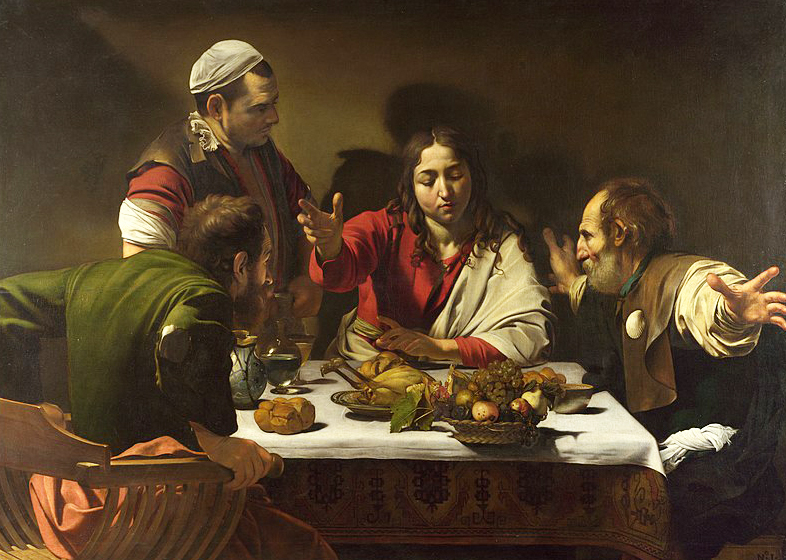In the previous thread on Christian art Berk said: ‘How and why the Italian Renaissance began to use Nordic faces in their paintings is not something I know, but it is a revolutionary act perhaps in resistance to the Christianity they faced’. I answered that maybe Nietzsche can help:
Is it understood at last, will it ever be understood, what the Renaissance was? The transvaluation of Christian values: an attempt with all available means, all instincts and all the resources of genius to bring about a triumph of the opposite values, the more noble values…
Supper at Emmaus (1606, above) is a painting by the Italian master Caravaggio, housed in the Pinacoteca di Brera in Milan, Italy. Caravaggio’s work had a formative influence on Baroque painting. I told my father a long time ago that the Baroque ‘was a betrayal of the Renaissance’. He got angry and didn’t seem to understand what I was saying.
Fra Angelico began painting 200 years before the above Supper in Emmaus was completed. If we compare the blond angels and even the blond Jesus and redhead Magdalene of Fra Angelico in my previous posts with the painting by Caravaggio, we clearly see the regression towards non-Aryan characters.
Non-Aryan characters are even more obvious in this other Supper in Emmaus of 1601, also of Caravaggio, which is not located in Italy but in the National Gallery of London. Notice how the face of Jesus in this picture is wider (that is, less Nordid) than the face of Jesus in the picture above.

